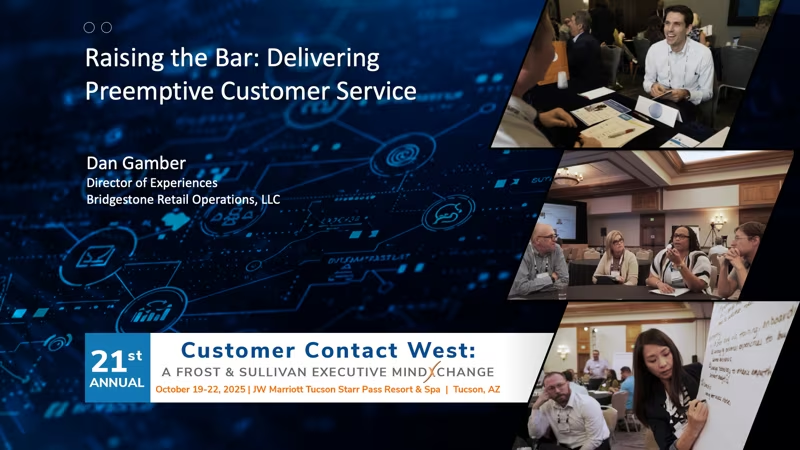The customer experience landscape is in the midst of a profound shift. Hybrid and remote contact centers are no longer temporary responses to a global disruption; they are the new operating model for many organizations. Yet while the structures have changed, one thing hasn’t: the need for human connection at the heart of every customer interaction.
What has changed is how leaders achieve it. In this new environment, the traditional management playbook of oversight and supervision falls short. Walking the floor, overhearing conversations, and providing in-the-moment feedback aren’t possible when teams are spread across homes, time zones, and even countries.
So, what is the key to thriving in this new reality? The answer is not more monitoring. It’s more coaching.
Because while technology can measure, only people can motivate. Metrics can track performance, but only coaching can unlock potential.
Why Coaching Matters More than Ever
Customers are more demanding than at any point in history. They expect personalized, seamless, and empathetic interactions every time they connect. Employees, meanwhile, want meaningful work, flexibility, and growth. Meeting these dual expectations requires more than compliance, it requires commitment. Coaching is how leaders cultivate that commitment.
Several studies confirm what many of us know instinctively:
- Gallup reports that employees who receive regular coaching conversations are three times more engaged at work
- Frost & Sullivan research highlights that agent experience is directly linked to customer loyalty, and that coaching and development programs are among the strongest predictors of reduced attrition
- Forbes has noted that coaching cultures see 46% higher revenue growth than without one
In the contact center world, where attrition rates can soar and customer expectations are unforgiving, coaching isn’t just “nice to have.” It’s the differentiator.
The Coaching Mindset: From Supervisor to Success Partner
In a hybrid or remote contact center, leaders must reimagine their role. Instead of seeing themselves as supervisors who police performance, they must step into the role of success partners who enable growth. This requires a mindset shift in three key areas:
- Move from Monitoring to Mentoring
Technology can track KPIs: average handle time, net promoter scores, first call resolution. But if conversations with employees stop there, morale erodes. Coaching turns data into dialogue. A poor metric isn’t an indictment; it’s an invitation: “What’s getting in the way, and how can I support you?” - Instead of Sporadic Feedback – Create a Consistent Connection
Remote workers often feel invisible. In hybrid models, proximity bias can unintentionally favor in-office employees. Leaders must counteract this by scheduling regular coaching sessions that are structured, supportive, and consistent. Even brief 15-minute touchpoints build a sense of belonging and purpose. - Evolve from a Performance Focus to Whole-Person Growth
Customers can hear fatigue or disengagement in an agent’s voice. Coaching that only addresses technical performance misses the bigger picture. True coaching acknowledges stress, celebrates resilience, and encourages employees to see themselves as more than their metrics.
Coaching in Action: What Works
Through years of experience leading and advising organizations, I’ve seen coaching succeed when it is intentional and embedded into the fabric of daily operations.
Here are five practices that separate thriving coaching cultures from those still struggling to adapt:
- Establish Clear Coaching Frameworks
Ad-hoc feedback doesn’t create consistency. Successful organizations adopt structured coaching frameworks that guide conversations across the organization. This ensures every agent, remote or onsite, receives the same level of investment. - Leverage Technology Without Losing Humanity
AI tools and analytics can provide incredible insights, from real-time sentiment analysis to performance dashboards. But these tools are most powerful when used as springboards for coaching, not replacements for it. - Recognize Micro-Wins
Employees in remote contact centers can feel disconnected from recognition. Celebrating micro-wins, a successful call, a positive customer survey, or even handling a tough situation with grace, reinforces engagement and resilience. - Train Leaders as Coaches, Not Just Managers
Coaching is a skill, not an instinct. Organizations that invest in equipping supervisors with coaching capabilities see higher returns in performance and culture. This includes active listening, asking empowering questions, and focusing on solutions, not just problems. - Foster Peer-to-Peer Coaching
Coaching doesn’t have to flow only from the top down. Creating opportunities for peer coaching through buddy systems, communities of practice, or shared learning circles multiplies its impact.
Real-World Impact
Consider one Fortune 500 financial services contact center I observed. Supervisors had traditionally spent 80% of their time on monitoring dashboards and reporting. By shifting just 20% of that time into structured coaching conversations, they saw remarkable results:
- Employee engagement scores rose by 18% within six months
- Voluntary attrition decreased by 12%
- Customer satisfaction scores improved, with customers specifically mentioning empathy and connection
The takeaway? Coaching pays dividends not just in morale, but in measurable business outcomes.
Overcoming Common Barriers
Of course, embedding coaching in hybrid or remote centers isn’t without its challenges. Leaders often cite:
- Time Constraints: “We’re too busy to coach.” But the cost of not coaching burnout, turnover, and poor customer experiences far outweighs the investment of time
- Skill Gaps: Many supervisors are promoted for operational excellence, not coaching ability. Training them to coach is essential
- Consistency Across Locations: Hybrid models can create uneven experiences. Standardizing frameworks ensures equity across geographies
Organizations that confront these barriers head-on build more resilient contact centers. Ones that adapt to change rather than react to it.
Coaching as the Leadership Advantage
In the end, hybrid and remote contact centers are not defined by their geography. They’re defined by their people. And those people will thrive not because they are monitored, but because they are coached.
Coaching fosters trust when distance is the default. It builds resilience when stress is high. And it inspires employees to deliver not just competent service, but memorable, human experiences that keep customers coming back.
Leaders who embrace coaching position themselves and their organizations for sustainable success. They transform contact centers from cost centers into value centers, where employees grow, customers feel cared for, and the business reaps the rewards.
The future of customer engagement belongs to organizations that understand this truth: technology may enable service, but coaching elevates it.
And in a world where both customers and employees have endless options, coaching may be the most powerful reason they choose to stay.
Tom LeNoble is an executive leader, international speaker, resilience coach, and philanthropist. His career spans Fortune 500 giants like MCI (VZ), Walmart.com (WMT), Palm (HP), and Facebook (META), as well as high-growth startups including SupportSpace (BBY), iPrint.com (acquired), and SpeedDate (MTCH).
As CEO of the Academy for Coaching Excellence and a Leadership Coach with the Miller Center at Santa Clara University, he trains and mentors leaders and entrepreneurs worldwide. A sought-after speaker and author, Tom shares transformative insights on leadership, empowerment, and resilience. Having overcome life-threatening illness, he lives by his conviction: “I’m Still Here!”



